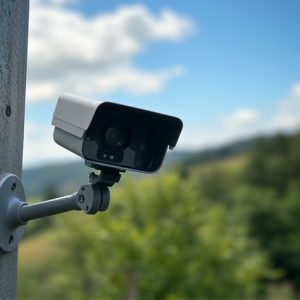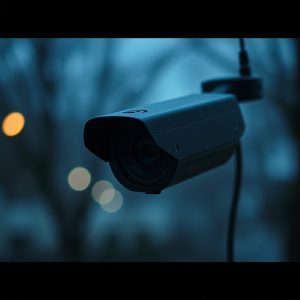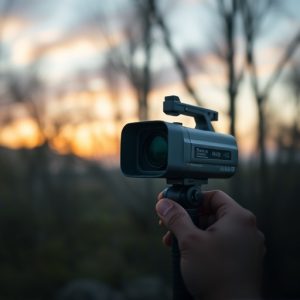Professional Counter Surveillance Guide: Protecting Home Security from Hidden Cameras
In today's digital era, with surveillance technology readily available, securing homes against…….
In today's digital era, with surveillance technology readily available, securing homes against hidden cameras is paramount. Professional counter-surveillance experts identify and neutralize these threats by examining best hidden camera locations using advanced tools like thermal imaging and AI software. Their meticulous planning involves assessing spaces, strategizing searches, and adhering to privacy laws. They target high-risk areas like corners, doorways, closets, and behind mirrors, as well as less obvious spots like wall voids and electrical boxes. Advanced technologies enhance detection accuracy, ensuring comprehensive protection. Post-sweep procedures prioritize client privacy by documenting findings, erasing devices, and providing detailed reports on enhancing home security around best hidden camera locations.
In today’s digital age, the threat of hidden surveillance poses a significant risk to personal privacy and home security. As spy technology becomes more advanced and accessible, counter-surveillance sweeps are essential for safeguarding sensitive information. This comprehensive guide explores best practices for professionals conducting thorough sweeps, from preparation and identifying high-risk areas in the home to using advanced tools and ensuring client privacy post-sweep. Learn the art of detecting hidden cameras and become a master of protecting your clients’ peace of mind.
- Understanding Counter Surveillance: The Growing Need for Professional Sweeps
- Best Practices: Preparation and Planning for a Comprehensive Sweep
- Identifying Hidden Camera Locations: A Professional's Guide to High-Risk Areas in the Home
- Advanced Tools and Technologies for Detecting Surveillance Devices
- Post-Sweep Procedures: Ensuring Client Privacy and Security
Understanding Counter Surveillance: The Growing Need for Professional Sweeps
In today’s digital era, the rise of hidden cameras and advanced surveillance technology has created a growing need for professional counter-surveillance sweeps. As folks become increasingly aware of the potential for invisible threats lurking within their homes, businesses, and public spaces, the demand for comprehensive security assessments has skyrocketed. Professional counter-surveillance experts are equipped with the knowledge and tools to identify and mitigate these hidden risks, ensuring a safe and secure environment.
The best hidden camera locations can vary widely depending on the context—from common spots like ceiling corners and doorjambs to more sophisticated uses of infrared technology or tiny, almost invisible lenses. Professionals employ intricate methods to detect these devices, including visual inspections, advanced sensors, and specialized software that can uncover even the most subtle traces of surveillance equipment. This proactive approach to home security is crucial in protecting individuals, businesses, and sensitive information from potential breaches.
Best Practices: Preparation and Planning for a Comprehensive Sweep
When preparing for a comprehensive counter surveillance sweep, meticulous planning is key. Start by assessing the physical space and identifying potential best hidden camera locations—from behind picture frames to inside electrical sockets—using advanced equipment like infrared cameras and borescopes. Engage a diverse team with expertise in electronics, security, and investigative techniques to ensure thoroughness. Develop a detailed plan outlining entry points, search strategies, and evidence collection protocols, adhering strictly to legal guidelines for privacy protection.
Regular updates on surveillance technology trends are crucial. Stay informed about the latest in hidden camera detection—from advanced thermal imaging to AI-driven analytics—to keep up with evolving threats. Collaborate with industry experts and share intel within your network to foster a proactive approach to home security against unwanted monitoring.
Identifying Hidden Camera Locations: A Professional's Guide to High-Risk Areas in the Home
Identifying hidden camera locations is a critical aspect of a comprehensive counter surveillance sweep. Professionals focus on high-risk areas within the home where covert cameras might be strategically placed. Common spots include corners, above doorways and windows, inside closets, behind mirrors, and under furniture—places that offer unobstructed views or concealment. By leveraging advanced detection tools, such as thermal imaging and infrared technology, experts can uncover even the most discreetly installed cameras.
In the pursuit of home security, it’s essential to understand the best hidden camera locations. Professionals recommend meticulous inspection of areas often overlooked by homeowners. This includes examining wall voids, electrical boxes, ceiling tiles, and behind appliances. The goal is to ensure that no device remains undetected, providing a sense of security and privacy for the occupants.
Advanced Tools and Technologies for Detecting Surveillance Devices
In today’s digital era, counter surveillance sweeps require advanced tools and technologies to effectively detect hidden cameras and other surveillance devices. Professionals utilize a range of innovative solutions, from thermal imaging cameras that can pinpoint heat signatures indicative of electronic equipment to RF (radio frequency) detectors capable of identifying active wireless signals. These cutting-edge tools allow experts to search for the best hidden camera locations, ensuring comprehensive home security.
Additionally, advanced software and AI-driven analytics play a crucial role in enhancing detection capabilities. By analyzing video feeds and patterns, these technologies can uncover subtle anomalies that might indicate the presence of surveillance devices. This includes identifying unusual pixel patterns, light reflections, or even subtle digital artifacts that could suggest hidden cameras in the most unlikely of best hidden camera locations.
Post-Sweep Procedures: Ensuring Client Privacy and Security
After a thorough counter surveillance sweep, ensuring client privacy and security becomes paramount. The first step is to thoroughly document all findings, including any hidden camera locations in homes or other secure spaces. This documentation should be done with meticulous care, recording details like device types, exact positions, and even unique identifiers if possible.
Next, it’s crucial to implement robust post-sweep procedures. This includes erasing or deactivating any devices discovered and ensuring that all data collected during the sweep is securely disposed of. Additionally, providing clients with a comprehensive report outlining the sweep findings and recommendations for enhancing home security—especially around best hidden camera locations—is essential for maintaining trust and confidence in your professional services.
In an era where privacy is increasingly at risk, understanding counter surveillance techniques becomes paramount for maintaining home security. This guide has navigated through best practices, from preparation strategies to advanced tools, offering a comprehensive approach to identifying hidden cameras in high-risk areas of the home. By adopting these professional methods, individuals can safeguard their personal spaces and peace of mind, ensuring that their homes remain secure sanctuaries free from covert surveillance.


